This article was medically reviewed by Pradeep Adatrow, DDS, MS. Dr. Pradeep Adatrow is the only board certified Dentist, Periodontist, and Prosthodontist in the southern United States. With over 15 years of experience, Dr. Adatrow specializes in dental implants, TMJ treatments, periodontal plastic surgery, surgical and non-surgical periodontics, bone regeneration, laser treatments, and soft tissue and gum graft procedures. He received a BS in Epidemiology and Biostatistics from the University of Alabama and earned his Doctor of Dental Surgery (DDS) degree from the University of Tennessee College of Dentistry. Dr. Adatrow then completed a three-year postgraduate program in periodontics and implantology at Indiana University and went on to complete another three-year postdoctoral program in advanced prosthodontics from the University of Tennessee. He also serves as a full-time professor and the Director of Surgical Prosthodontics at the University of Tennessee. Dr. Adatrow received the Dean's Junior Faculty Award and the John Diggs Faculty Award, and he was inducted into the Deans Odontological Society. He is board certified by the American Board of Periodontology and is a Fellow of the prestigious International College of Dentistry – a feat that only 10,000 others worldwide can claim.
There are 7 references cited in this article, which can be found at the bottom of the page.
This article has been viewed 61,359 times.
Wisdom teeth are an uncomfortable part of life. They grow in, put pressure on your other teeth, erupt through your gums, and are often extracted. Each of these can be really painful experiences, and it can be hard to focus on other things when you’re constantly suffering from pain. However, there are a variety of ways to help ease the pain, whether your wisdom teeth are just starting to poke through your gums, or if you’ve recently had them removed.
Steps
Easing Pain at the Early Stages
-
1Know where your new teeth are growing. Try to be aware of sore locations when you’re going about your daily routines. Be extra careful about brushing and biting on the side where the tooth is growing because you may cause inflammation or even an infection. If multiple wisdom teeth are growing in on both the left and right sides of your mouth, try to identify which spots are the most sensitive, and be gentle with them.[1]
- Don’t poke and prod with your tongue, as this will aggravate your sensitive and swollen gums, and could lead to infection.
-
2Brush your teeth regularly. It’s important to prevent decay or infection, especially as your wisdom teeth begin to develop. Since your gums may be sensitive or swollen, you might feel the urge to shy away from brushing, but you must keep up with your hygiene routine. New nooks and crannies form with swollen gums and emerging wisdom teeth, and these introduce areas for bacteria to grow. [2]
- Tooth decay, cavities, and periodontal disease (or gum infection) will only make your pain that much more intolerable and your entire mouth can get sore.
- If you don’t keep up with your dental hygiene, your hard-to-reach wisdom teeth might become infected or develop cavities as soon as they fully emerge, which greatly increases the need for their removal. Since they are the last teeth to appear, the enamel is less mineralized. If you have poor oral hygiene, then cavities can easily form and do a lot of harm.
Advertisement -
3Take anti-inflammation pain medications. Ibuprofen and similar over the counter medications are effective for wisdom tooth pain, especially in its initial phases. Always use any medication as directed, and never take more than the directed dosage. Ibuprofen, while effective, also can cause bleeding, so make sure you check in with your doctor or dentist about regular use.[3]
Managing Impacted and Erupting Wisdom Teeth
-
1Use topical anesthetics. Topical ointments like Oragel, Cepacol, and other products that contain benzocaine are great for numbing pain for a short amount of time. Press a dry cloth onto the affected area, then apply a numbing topical anesthetic. The dry cloth will help ensure the ointment gets absorbed efficiently without getting washed away by saliva. While it’s only a temporary fix, it’ll provide fast comfort for acute pain.[4]
- Keep in mind that topical anesthetics will not last for more than an hour or so because the saliva washes the substance away.
-
2Use mouth rinses.[5] Mix one cup of warm water with one teaspoon of salt until the salt as dissolved. Gently swish the rinse around your mouth, then spit. While it’s not too helpful for deeper jaw pain associated with impacted teeth, it’ll alleviate surface swelling and damaged oral tissue that results when wisdom teeth erupt, or break through the gum surface.[6]
- A saltwater rinse will help kill bacteria in your mouth.[7]
-
3Try clove oil or whole cloves. Cloves are a home remedy that might be able to help tooth pain. Use a cotton swab or ball to apply clove oil to the affected area, and you should experience a gentle, warm, numbing sensation.[8] Try placing a whole clove onto the affected area if you have them handy and as long as the clove’s shape doesn’t cause any discomfort.[9]
-
4Use ice.[10] If the tooth is not sensitive to cold, then you can also try placing a gauze wrapped ice cube on the area of your wisdom tooth that hurts. Leave it on for about 5 to 10 minutes to numb the area and then remove it for a while. Repeat as needed.
-
5See a dentist.[11] It’s important to visit a dentist to see if the tooth is infected, is coming in on a bad angle, doesn’t have enough room to grow in, is pushing other teeth out of the way, or is causing any damage to your jaw or other parts of your mouth. If any of these apply, it’s possible that you’ll need to have your tooth or teeth extracted.[12]
- It is also possible that a simple removal of the covering gum will make the pain go away as soon as the next day.
Easing Pain from Wisdom Tooth Removal
-
1Get plenty of rest after extraction. Curl up and get some sleep immediately following your surgery, and get lots of rest for the next one to two days, depending on your dentist or oral surgeon’s orders. Avoid strenuous activity for at least a week.[13]
- If you experience persistent bleeding the day of surgery, keep your head and upper body elevated with several pillows while you’re resting in order to prevent choking.
- Be careful not to sleep on the extraction site, as it will create heat over the area.
-
2Use pain medications as recommended. If your oral surgeon prescribed or recommended medication, use it as directed. If you were not prescribed medication, you can use ibuprofen or another over-the-counter pain medication. Call your surgeon if you experience severe pain and consult with them about another medication option or dosage.
-
3Apply ice packs. Apply ice to manage pain, swelling, and bruising. Swelling will reach its peak within 2-3 days of surgery, but regularly using ice packs immediately after extraction can help keep it at a minimum. Apply a zip-lock bag of ice or ice pack to your face where surgery occurred. Keep the ice on for 20 minutes, then take it off for 20 minutes.[14]
-
4Control bleeding. Oozing bleeding from the surgical site is one of the most uncomfortable parts of wisdom tooth removal. Keep gauze in to protect the surgical site and change it out regularly. Firmly bite the gauze to help control bleeding, but don’t bite so hard that it causes any pain. [15]
- Keep some sterile gauze on your tooth by biting on it over the extraction site.
- If bleeding persists, try biting down on a moistened, cool tea bag: tannic acid in the tea will help to clot blood.
- Avoid excessive or forceful spitting or coughing, as this will dislodge blood clots.
- Give your dentist or oral surgeon a call if bleeding persists for more than a day.
-
5Eat soft, lukewarm foods. Go for creamy soups, smooth yogurts, custard, smoothies, milkshakes, and other nutrient-rich choices that are easy to drink. Avoid foods and beverages that are too hot or too cold. Also stay away from smoothies or purées that contain strawberries or other fruits with small seeds. These can get stuck in wound sockets.
Expert Q&A
Did you know you can get expert answers for this article?
Unlock expert answers by supporting wikiHow
-
QuestionCan I use ice on my wisdom teeth?
 Pradeep Adatrow, DDS, MSDr. Pradeep Adatrow is the only board certified Dentist, Periodontist, and Prosthodontist in the southern United States. With over 15 years of experience, Dr. Adatrow specializes in dental implants, TMJ treatments, periodontal plastic surgery, surgical and non-surgical periodontics, bone regeneration, laser treatments, and soft tissue and gum graft procedures. He received a BS in Epidemiology and Biostatistics from the University of Alabama and earned his Doctor of Dental Surgery (DDS) degree from the University of Tennessee College of Dentistry. Dr. Adatrow then completed a three-year postgraduate program in periodontics and implantology at Indiana University and went on to complete another three-year postdoctoral program in advanced prosthodontics from the University of Tennessee. He also serves as a full-time professor and the Director of Surgical Prosthodontics at the University of Tennessee. Dr. Adatrow received the Dean's Junior Faculty Award and the John Diggs Faculty Award, and he was inducted into the Deans Odontological Society. He is board certified by the American Board of Periodontology and is a Fellow of the prestigious International College of Dentistry – a feat that only 10,000 others worldwide can claim.
Pradeep Adatrow, DDS, MSDr. Pradeep Adatrow is the only board certified Dentist, Periodontist, and Prosthodontist in the southern United States. With over 15 years of experience, Dr. Adatrow specializes in dental implants, TMJ treatments, periodontal plastic surgery, surgical and non-surgical periodontics, bone regeneration, laser treatments, and soft tissue and gum graft procedures. He received a BS in Epidemiology and Biostatistics from the University of Alabama and earned his Doctor of Dental Surgery (DDS) degree from the University of Tennessee College of Dentistry. Dr. Adatrow then completed a three-year postgraduate program in periodontics and implantology at Indiana University and went on to complete another three-year postdoctoral program in advanced prosthodontics from the University of Tennessee. He also serves as a full-time professor and the Director of Surgical Prosthodontics at the University of Tennessee. Dr. Adatrow received the Dean's Junior Faculty Award and the John Diggs Faculty Award, and he was inducted into the Deans Odontological Society. He is board certified by the American Board of Periodontology and is a Fellow of the prestigious International College of Dentistry – a feat that only 10,000 others worldwide can claim.
Board Certified Dentist & Oral Surgeon
References
- ↑ http://wisdomtoothpain.org/
- ↑ http://www.mayoclinic.org/diseases-conditions/wisdom-teeth/basics/treatment/con-20026676
- ↑ https://crest.com/en-us/oral-care-tips/wisdom-teeth/wisdom-teeth-pain-symptoms-causes-remedies-relief
- ↑ http://wisdomtoothpain.org/
- ↑ Pradeep Adatrow, DDS, MS. Board Certified Dentist & Oral Surgeon. Expert Interview. 30 September 2020.
- ↑ http://wisdomtoothpain.org/
- ↑ Pradeep Adatrow, DDS, MS. Board Certified Dentist & Oral Surgeon. Expert Interview. 30 September 2020.
- ↑ Pradeep Adatrow, DDS, MS. Board Certified Dentist & Oral Surgeon. Expert Interview. 30 September 2020.
- ↑ http://wisdomtoothpain.org/
- ↑ Pradeep Adatrow, DDS, MS. Board Certified Dentist & Oral Surgeon. Expert Interview. 30 September 2020.
- ↑ Pradeep Adatrow, DDS, MS. Board Certified Dentist & Oral Surgeon. Expert Interview. 30 September 2020.
- ↑ http://www.mayoclinic.org/diseases-conditions/wisdom-teeth/basics/treatment/con-20026676
- ↑ http://www.mayoclinic.org/tests-procedures/wisdom-tooth-extraction/basics/what-you-can-expect/prc-20020652
- ↑ http://www.oralfacialsurgery.com/patient-information/instructions/after-multiple-extractions/
- ↑ http://www.oralfacialsurgery.com/patient-information/instructions/after-multiple-extractions/
About This Article
To ease wisdom tooth pain, start by making a mouth rinse with 1 cup of warm water and 1 teaspoon of salt, and gently swishing it around in your mouth to alleviate the swelling. Alternatively, wrap an ice cube in a piece of gauze and place it onto the area of your gums that hurts for 10 minutes to numb the pain, repeating as often as needed. You can also numb the area with a topical ointment, such as Oragel or Cepacol. However, make sure to press a dry cloth to the affected area first to keep the ointment from being washed away by your saliva. For more tips from our Dental co-author, including how to control the bleeding after you’ve had your wisdom teeth extracted, read on!
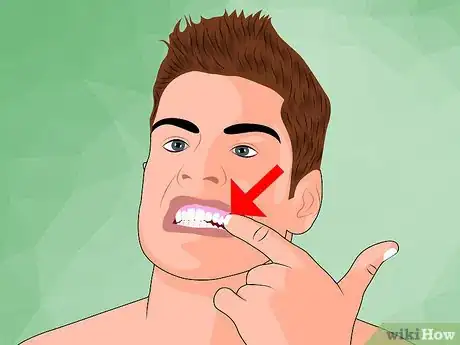
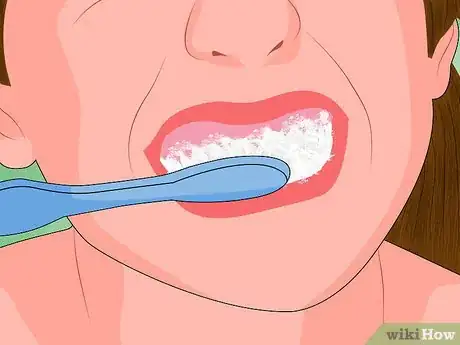
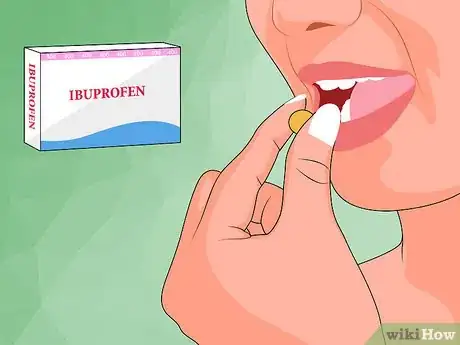





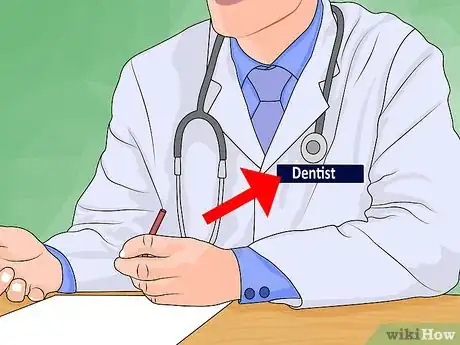

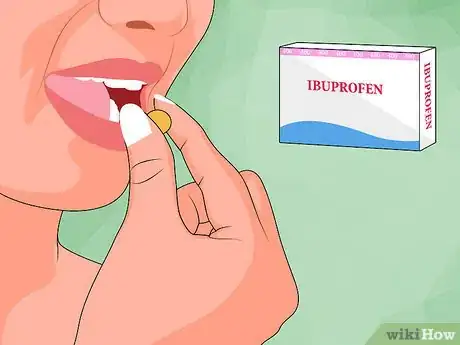
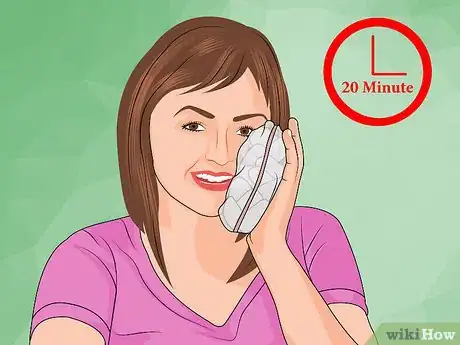
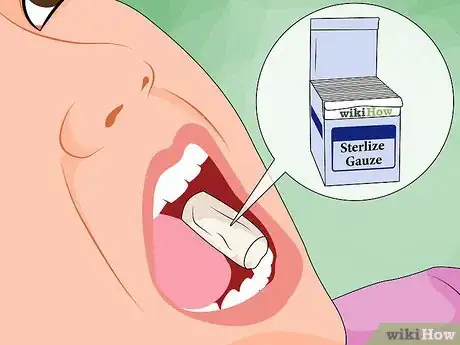

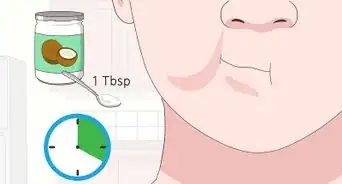
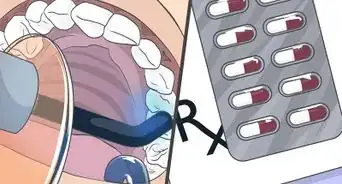
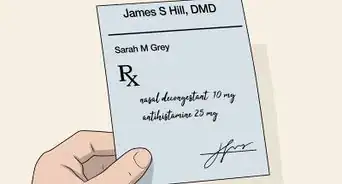

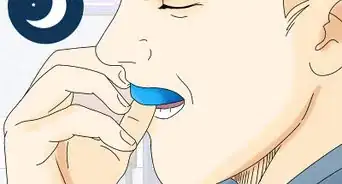
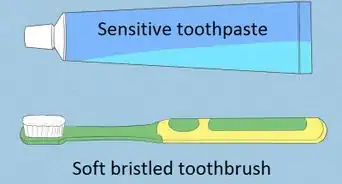
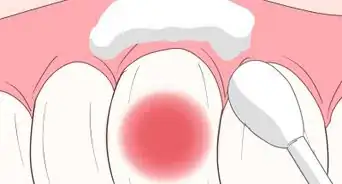



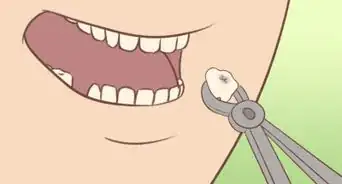
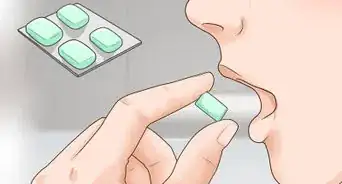
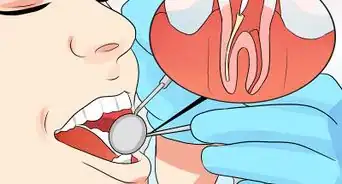








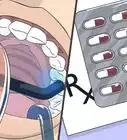
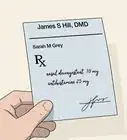




































Medical Disclaimer
The content of this article is not intended to be a substitute for professional medical advice, examination, diagnosis, or treatment. You should always contact your doctor or other qualified healthcare professional before starting, changing, or stopping any kind of health treatment.
Read More...